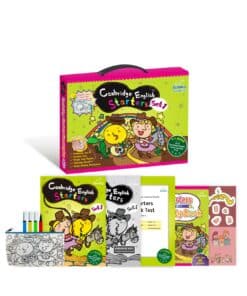Volume
Experiment with different volume levels in your own voice. If the class is becoming very roudy or is too excited – check yourself. Are you trying to speak over the noise? Bring your energy down and introduce the next activity in a whisper. If they want to know what it is, they’ll quiet down to listen! Don’t fight fire with fire – only on rare occasions will you need to speak sternly over the class (if things are really really too chaotic)
Facial Expressions
Practice them in the mirror. Your face should be sore at the end of the day from all the smiling you did. When you’re reading a story, show that you are shocked/excited/scared/curious/happy to know what is on the next page. Kids love to play copy cat at this phase – they are also learning how to react to things. If you show that this book is so interesting through your facial expressions, you’ll see their faces mirroring yours!
Get On Their Level
Imagine you were their size – looking up at someone your size. It’s scary! Crouch down to their level whenever possible. If they students are seated on the floor for the lesson, sit on a child-sized chair in front of them. This will help you be grounded in one place, giving a sense of calmness to the class. Alternatively, when students are misbehaving, standing up and looking stern can be all the difference you need without speaking.
Deal with inappropriate behavior non-verbally
If a student is acting up, turning and talking to them for even the length of a sentence will distract the rest of the class, and give that student unintentional positive reinforcement of their actions (your attention!). Additionally, since they are learning English, saying too much might confuse them or lose the meaning. A short, crisp “No” can be all you need. If you can, don’t even say that! Just a quick look in their direction with a stern expression, a quick forceful shake of the head – they’ll know you’re watching, and the wordlessness is all they need to know. Of course, when time permits, with young students it is important to gently explain behaviors as they truly might not realize what they did is wrong. It is important to address the behavior immediately after it has happened.
Total Physical Response (TPR)
Many online resources for this! Associate certain words with actions so that the kids can easily understand what they are required to do. These you do not need to teach – the children will pick it up from your repeated use of it. For example:
- “say…” point to your mouth
- “listen” cup your ear
- “stand up” you stand up while lifting your arms – so that even if you are already standing you can continue to use it!
- “sit down” same but opposite
- “be quiet” hand on lips
- “who wants a turn?” raising your arm and pointing to it /alternating with hand on lips so they know only quiet kids (not those screaming out “me! me!” will get a turn)
Variety
Of course, lessons should be varied – songs, games, standing/sitting, calm, energetic etc. This is from your lesson planning stage. However, include variety within each activity.
For example: there are 17 students. You want each of them to have a chance speaking (or at least half of them, if you can maintain their attention). As you work through inviting them all to have a chance, switch up what you do – keep the activity the same so they know what the expectation is, but vary the reward. Are you giving a high five after they do it? Every 2-3 kids move your hand away quickly so they need to try a few times before getting a high five. Those sitting and watching will be entertained, and this keeps the reward interesting. Are you tossing them a ball when it’s their turn to answer? For every few kids who pass the ball back to you, feign a huge reaction as if you’ve almost missed catching it. Play around with it!
Choral Speech
Choral speech and group repetition activities are excellent for bringing the focus and energy back together. For example, if the class is distracted by a crying student, another teacher walking into the room, or a few students are all misbehaving, do a classroom routine that they are very familiar with, whether it’s a song they know the words and actions to, a clapping game, or a simple speaking repetition etc.
This focuses the energy back to the same place as the students fall into the familiarity of the routine. As it comes to an end, capitalize on the moment of silence directly after it finishes to launch into the task at hand.
Introduce New Material
Children are easily distracted by something new. If attention is waning, introduce your next material with the element of surprise. The flashcard pops out from behind the whiteboard; the fruit stuffed toy is pulled out of a bag. The trick is to only let the item fully appear when the student’s attention is on you!
The Shy Puppet
Introduce a puppet with the character of always being very shy. The puppet hides, and only peeks out when the students are quiet. Use the same puppet for fun games (i.e. Feed the Puppet) so that students look forward to seeing it! As they associate being quiet with the puppet, you can pull it out whenever they’re being too rowdy.






